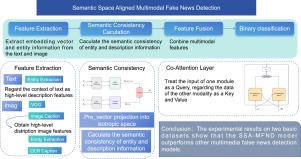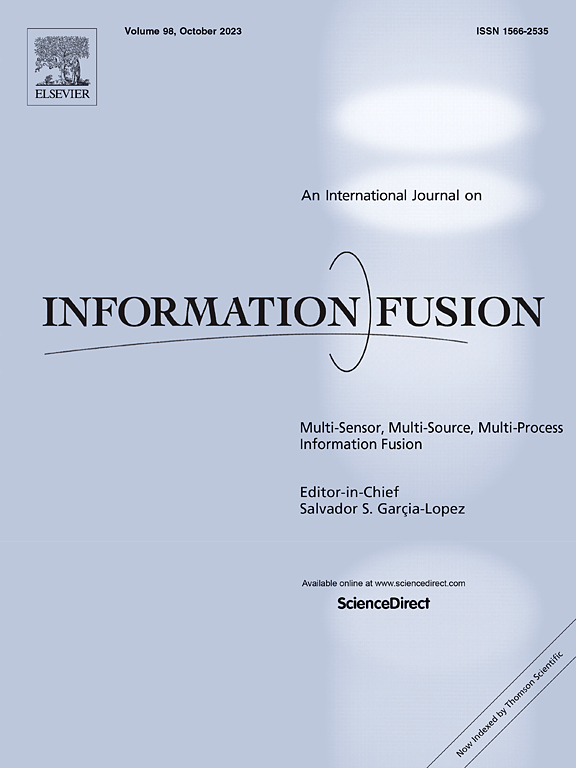基于语义空间的多模态假新闻检测
IF 15.5
1区 计算机科学
Q1 COMPUTER SCIENCE, ARTIFICIAL INTELLIGENCE
引用次数: 0
摘要
假新闻的传播误导不知情的公众相信不正确的信息,这对社会产生了负面影响。由于目前大多数社交媒体内容都是图像和文字的结合,人们对多模式假新闻检测方法的兴趣越来越大。然而,现有的多模态假新闻检测方法往往忽视了不同层次一致性的互补作用。而且在测量一致性时不能保证各向同性的计算空间。本文提出了基于语义空间对齐的多模态假新闻检测模型SSA-MFND。为了充分整合各个模态的信息,该模型比较描述层和实体层之间的语义一致性,将语义表示投影到各向同性空间,然后进行语义一致性计算。此外,我们的模型利用了描述和实体级别的语义一致性比较,解决了当前多模态方法中通常只考虑一个一致性级别的关键差距。实验结果表明,该模型在微博数据集上的准确率比现有模型提高了2%。在计算前结合语义层次信息并对语义空间进行投影,大大提高了假新闻检测的准确率。SSA-MFND模型可以有效地应用于社交媒体平台,帮助自动检测虚假信息,减少误导性内容的传播。该应用程序不仅有助于提高平台上的内容质量,还可以保护用户免受虚假信息的影响。本文章由计算机程序翻译,如有差异,请以英文原文为准。

Semantic space aligned multimodal fake news detection
The spread of fake news misleads the uninformed public into believing incorrect information, which has a negative impact on society. With the majority of current social media content being a combination of images and text, there has been an increasing interest in multimodal fake news detection methods. However, existing multimodal fake news detection methods often overlook the complementary role of consistency at different levels. Moreover, they cannot ensure isotropic calculation space when measuring consistency. This paper proposes SSA-MFND, a multimodal fake news detection model based on semantic space alignment. To fully integrate the information from each modality, the model compares the semantic consistency between the description layer and the entity layer, projecting the semantic representation into isotropic space before the semantic consistency calculation. Additionally, our model leverages semantic consistency comparisons at both the description and entity levels, addressing a critical gap in current multimodal methods that typically consider only one level of consistency. Experimental results show that the model achieves an improved accuracy of 2% compared to the state-of-the-art on the microblog dataset. Incorporating semantic hierarchical information and projecting the semantic space before computation greatly enhances the accuracy of fake news detection. The SSA-MFND model can be effectively applied to social media platforms, aiding in the automated detection of fake information and reducing the spread of misleading content. This application not only helps improve the quality of content on the platform but also protects users from the influence of false information.
求助全文
通过发布文献求助,成功后即可免费获取论文全文。
去求助
来源期刊

Information Fusion
工程技术-计算机:理论方法
CiteScore
33.20
自引率
4.30%
发文量
161
审稿时长
7.9 months
期刊介绍:
Information Fusion serves as a central platform for showcasing advancements in multi-sensor, multi-source, multi-process information fusion, fostering collaboration among diverse disciplines driving its progress. It is the leading outlet for sharing research and development in this field, focusing on architectures, algorithms, and applications. Papers dealing with fundamental theoretical analyses as well as those demonstrating their application to real-world problems will be welcome.
 求助内容:
求助内容: 应助结果提醒方式:
应助结果提醒方式:


